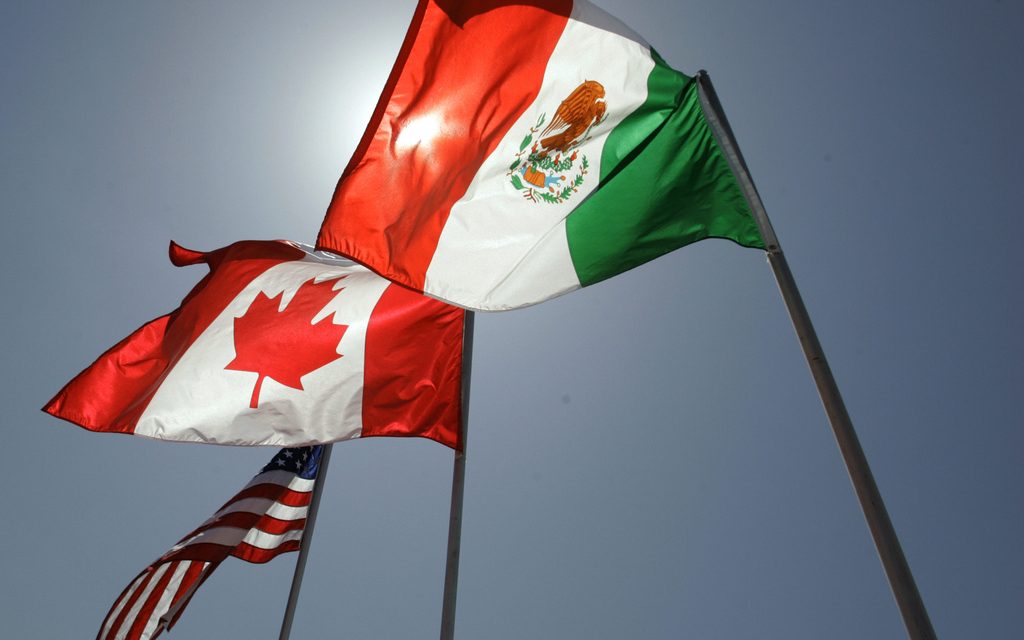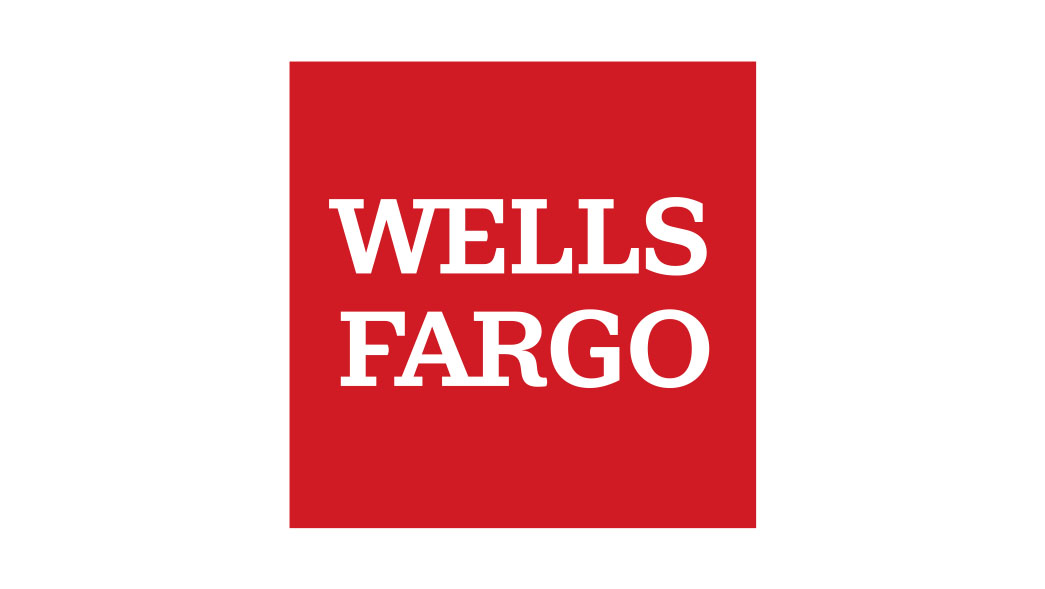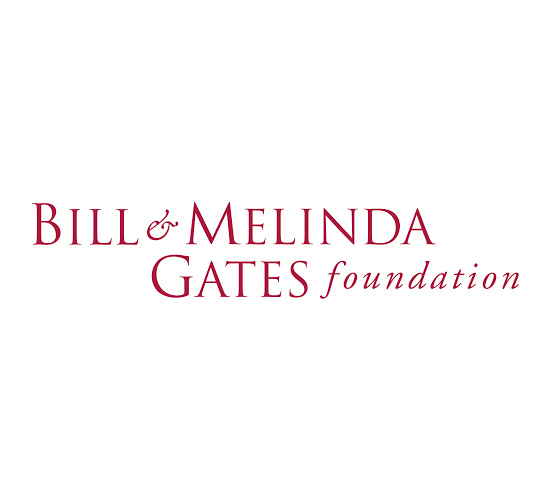By Josh Boak
The Associated Press
PALM BEACH, Fla. (AP) — President Donald Trump said Feb. 2 that Americans could feel “some pain” from the emerging trade war triggered by his tariffs against Canada, Mexico and China, and claimed that Canada would “cease to exist” without its trade surplus with the United States.
The trade penalties that Trump signed Feb. 1 at his Florida resort caused a mix of panic, anger and uncertainty, and threatened to rupture a decades-old partnership on trade in North America while further straining relations with China.
“Canadians are perplexed,” said the country’s U.S. ambassador, Kirsten Hillman. “We view ourselves as your neighbor, your closest friend, your ally.”

By following through on a campaign pledge, Trump may also have simultaneously broken his promise to voters in last year’s election that his administration could quickly reduce inflation. That means the same frustration he is facing from other nations might also spread domestically to consumers and businesses.
“WILL THERE BE SOME PAIN? YES, MAYBE (AND MAYBE NOT!),” Trump said in a social media post. “BUT WE WILL MAKE AMERICA GREAT AGAIN, AND IT WILL ALL BE WORTH THE PRICE THAT MUST BE PAID.”
His administration has not said how high that price could be or what improvements would need to be seen in stopping illegal immigration and the smuggling of fentanyl to merit the removal of the tariffs that Trump imposed under the legal justification of an economic emergency. The tariffs are set to launch Feb. 4.
“If prices go up, it’s because of other people’s reactions to America’s laws,” his homeland secretary, Kristi Noem, said on NBC’s “Meet the Press.”
In his Truth Social post, Trump took particular aim at Canada, which responded with retaliatory measures. Trump is placing a 25 percent tariff on Canadian goods, with a 10 percent tax on oil, natural gas and electricity. Canada is imposing 25 percent tariffs on more than $155 billion Canadian (US$105 billion) in U.S. products, including alcohol and fruit.
Trump railed against Canada’s trade surplus with the United States: “We don’t need anything they have. We have unlimited Energy, should make our own Cars, and have more Lumber than we can ever use.”
Despite Trump’s assertion that the U.S does not need Canada, one-quarter of the oil that America consumes per day is from its ally to the north. He reiterated his false claim that America subsidizes Canada.
Trump contended that without that surplus, “Canada ceases to exist as a viable Country. Harsh but true! Therefore, Canada should become our Cherished 51st State. Much lower taxes, and far better military protection for the people of Canada — AND NO TARIFFS!”
Hillman, the ambassador, has said the U.S. had about a $75 billion Canadian ($51 billion) trade deficit with Canada last year, but noted that one-third of what Canada sells into the U.S. is energy exports and that there is a deficit when oil prices are high. About 60 percent of U.S. crude oil imports are from Canada.
Prime Minister Justin Trudeau is encouraging Canadians to buy more Canadian goods, and says Trump’s moves will only cause pain across North America. More than 75 percent of Canada’s exports go to the U.S. Canada will first target alcohol, cosmetics and paper products; a second round later will include passenger vehicles, trucks, steel and aluminum products, certain fruits and vegetables, beef, pork, dairy products and more.
Canada is the largest export market for 36 states and Mexico is the largest trading partner of the U.S.
Canadians “just don’t understand where this is coming from … and probably there’s a little bit of hurt, right?” Hillman told ABC’s “This Week” on Feb. 2.
Mexico’s president, Claudia Sheinbaum, also announced new tariffs and suggested the U.S. should do more within its own borders to address drug addiction. She and Trudeau spoke after Trump’s announcement and agreed “to enhance the strong bilateral relations” between Canada and Mexico, according to the prime minister’s office.
The Chinese government said it would take steps to defend its economic interests and intends to file a lawsuit with the World Trade Organization.
For Trump, the open question is whether inflation could be a political pressure point that would cause him to back down. As a candidate, Trump repeatedly hammered Democrats over the inflation under President Joe Biden that resulted from supply chain issues during the coronavirus pandemic, the Biden administration’s own spending to spur the recovery and Russia’s invasion of Ukraine.
Trump said his previous four years as president had low inflation, so the public should expect the same if he came back to the White House. But he also said specifically that higher inflation would stagger the U.S. as a nation, a position from which he now appears to be retreating with the tariffs.
“Inflation is a disaster,” he said at a Philadelphia campaign rally. “It’s a country-buster. It’s a total country-buster.”
Larry Summers, treasury secretary in the Clinton administration, said the tariffs were “a self-inflicted wound to the American economy.”
“Inflation might go up over the next nine months by as much … as 1 percent, just at a moment when we were trying to bring it down,” he told CNN’s “Inside Politics.”
He added that “on the playground or in international relations, bullying is not an enduringly winning strategy. And that’s what this is.” And the ultimate winner, Summers suggested, would be Chinese leader Xi Jinping because “we’ve moved to drive some of our closest allies into his arms” and “we’re legitimating everything he’s doing by violating all the international norms that we set up.”
Outside analyses make clear that Trump’s tariffs would hurt the voters that he intended to help, meaning that he might ultimately need to find a resolution.
An analysis by the Budget Lab at Yale shows, if the tariffs were to continue, an average U.S. household would lose roughly $1,245 in income this year, in what would be the overall equivalent of a more than $1.4 trillion tax increase over the next 10 years.
Goldman Sachs, in a Feb. 2 analyst note, stressed that the tariffs go into effect on Feb. 4, which means they’re likely to proceed “though a last-minute compromise cannot be completely ruled out.”
The investment bank concluded that because of the possible economic damage and possible conditions for removal that “we think it is more likely that the tariffs will be temporary but the outlook is unclear.”
___
Associated Press writer Rob Gillies in Toronto contributed to this report.

PALM BEACH, Fla. (AP) — With a trio of executive orders, President Donald Trump has almost instantly thrown the world economy and his own goal of cutting inflation into turmoil.
His tariffs against Canada and Mexico in order to stop illegal immigration and the illicit fentanyl trade led to retaliatory taxes by both countries on U.S. imports. He placed an additional 10 percent tariff on imports from China with the stated goal of stopping the production of fentanyl.
But on a deeper level, Trump suddenly hit the U.S. economy with tax increases that, if sustained, could total more than $1 trillion in 10 years. He did so without congressional approval and by his own acknowledgement at the perilous chance of “some pain” in the form of higher inflation, job losses and worse growth.
Here’s an explanation of what Trump’s executive orders say and how they work:
What is the International Emergency Economic Powers Act?
This is the 1977 law that helped enable Trump to declare an economic emergency in the executive orders and implement his tariffs. There are more than three dozen active emergencies, including measures taken to respond to the 1979 Iran hostage crisis, human rights violations in Venezuela, nuclear weapon development in North Korea and multiple actions taken by China and Russia.
The law enables a president to freeze and block transactions in response to “unusual and extraordinary” threats outside the United States.
What are the tariffs on Canada, Mexico and China?
The tariffs would start at the beginning of Feb. 4.
There would be an additional 25 percent tariff on imports from Canada, with a lower 10 percent charge on the oil, natural gas, electricity and other energy products. Energy products were taxed at a lower level to prevent U.S. consumers and businesses from paying higher prices for gasoline and utilities. Mexican imports would face an additional 25 percent tax. China would face an additional 10 percent tariff.
While Trump has said that foreigners pay these taxes, the tariffs would be paid by the individuals and companies bringing in the goods — which means this would be a domestic tax increase.
Why were the tariffs imposed?
Trump’s orders say the tariffs are a consequence of illegal immigration and drug smuggling. Not everyone will agree with his reasoning, as U.S. government reports show that unauthorized border crossings from Mexico have fallen over the past year and seizures of fentanyl along the northern border are relatively low.
But Trump’s order on Mexico says that drug traffickers and the country’s government “have an intolerable alliance” that “endangers the national security of the United States, and we must eradicate the influence of these dangerous cartels.” His order on Canada says that Mexican cartels are operating in that country and claims despite the modest amount of fentanyl intercepted that it would be enough to kill “9.5 million Americans.” The order on China says that country’s government provides a “safe haven” for criminal organizations to “launder the revenues from the production, shipment, and sale of illicit synthetic opioids.”
Those are the stated legal reasons, but Trump has expressed a deep admiration to tariffs in general, claiming that they would make the United States wealthier even though they are tax hikes that can be passed along to consumers and businesses in the form of higher prices.
Could the tariffs be increased?
Yes. The orders are very clear that the U.S. president can respond to retaliatory actions — which are already planned as Canada and Mexico have their own counter-tariffs ready for U.S. products. Should they take action, Trump “may increase or expand in scope the duties imposed under this order.” What’s key here is that the tariffs wouldn’t increase automatically. It would still be the U.S. president’s choice.
What’s this ‘de minimus’ language mean?
This is an important clause in the orders. When people import goods worth less than $800, like say a dress bought online from a European retailer, they don’t pay customs and duties on their purchase. This is legally known as the “de minimus” treatment, which suggests that the cost of what’s being imported is too low to merit a tariff. That exclusion would no longer apply to products imported from Canada, Mexico and China.
Can Congress stop the tariffs?
It would require a new law that Trump would have to sign, which seems unlikely based on his statements. Still, Congress will have some oversight responsibilities as the order requires the Homeland Security Department in consultation with other agencies to “submit recurring and final reports to the Congress on the national emergency.”
How can the tariffs be lifted?
The administration has not set any benchmarks for the other countries to meet, though a senior official suggested that declines in fentanyl-related deaths would be an option. What the order suggests is that the choice would ultimately be at Trump’s discretion.
It orders Homeland Security Secretary Kristi Noem to consult with her counterparts at the State and Justice departments, as well as White House officials. This specifically refers to the post at Homeland Security, rather than Noem specifically. But she would be able to inform the U.S. president of whether “adequate steps” have been taken to address the emergencies. It would then be up to the president to determine whether to remove the tariffs.
The post President admits Americans could feel ‘some pain’ from his new tariffs that are triggering a trade war appeared first on AFRO American Newspapers.










